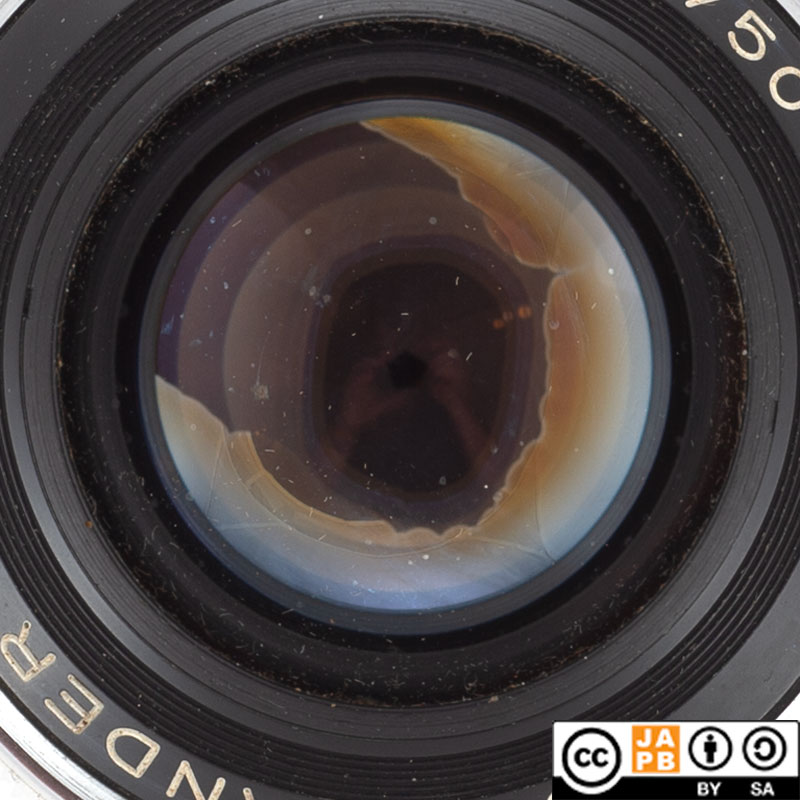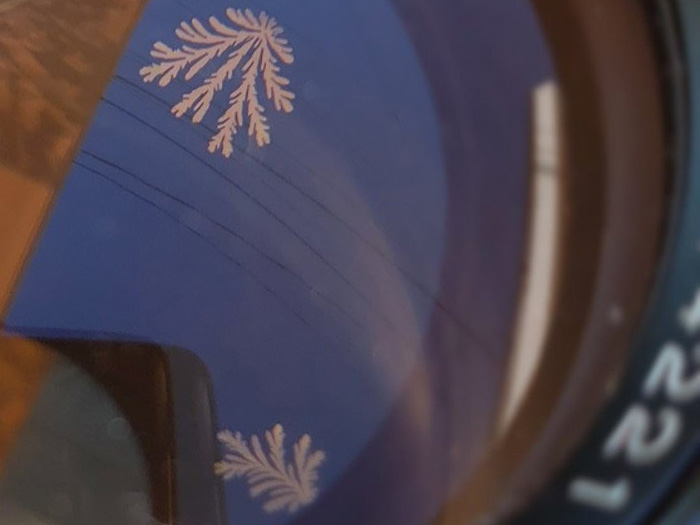Pekka Buttler, June 2020
Unless you’ve dabbled with lenses – especially older lenses – you may never had heard of element separation (or, in short ‘separation’). When I see the word ‘separation’ in the description of a lens which is for sale, I steer clear of it. This is not because I’m twice divorced, but … well, I’ll try to let this article explain.
I’ll start with explaining what element separation is, and how it comes to be, before discussing the severity of element separation and what can be done to address it.
What is element separation and why does it happen.
In studying the specifications of a lens, you’ve probably encountered phrases like “X lens elements in Y groups”. In such situations, If X and Y are equal, it means every lens element is separate, and if X is larger than Y, then it means that two (or more) lens elements have been cemented together to form a group.
Lens [element] groups are used, because a combination of two elements (a concave lens followed by a convex lens or vice versa; or a flint and crown element) have the ability to bend light with fewer undesireable side-effects than an optically similar one-element design.
Technically the cementing of elements happens through the use of a ‘glue’ which merges the elements into one. Back in the days, cementing was done using Canada balsam (processed fir resin), but nowadays, UV-cured epoxies are the norm (i will just continue referring to them as ‘glue’).
Naturally, this firstly presupposes that the two elements’ shapes fit perfectly together, because you want the glue to be as thin and even a layer as possible. Thereafter, you need to find a ‘glue’ that is totally transparent and has a refractive index as close to the glass as possible. When done correctly, cementing results in two lens elements separated by a microscopically thin layer of ‘glue’ and no air bubbles or dirt.
Element separation can happen in one of two ways. Most typical is that two cemented elements start separating along the edges. When this happens it might at least partially be due to that the profiles of the lenses do not match perfectly (the layer of ‘glue’ has been of varying thickness), and as time passes and the lens surroundings (especially temperature) change, leading to that thermal expansion/contraction stresses the ‘glue’ until it starts separating. Especially with multicoated lenses separating, this can lead to rather spectacular rainbow diffraction patterns in those areas where separation has occurred, but may also just show as a milky veil at the edge of the cemented element.
The other way happens through boiling, when the lens is subjected to such temperatures, that the ‘glue’ loses its stability, and outgasses. Bubbles of gas start to form within the glue layer, and as the temperature returns to something more normal, those gasses are not reabsorbed. These bubbles may form anywhere between the cemented lenses (not only at the edges), but typically form in clusters. Moreover, as the gas tries to find more room, it can lead to some quite intricate patterns (such as in the picture above).
How to identify element separation?
First off, whether you’re browsing photo forums or youtube videos, there are a lot of people who either cannot or do not want to distinguish between element separation (this article), haze (the previous article), or fungus (the article before that). The distinction is nevertheless worthwhile, because the diagnosis has significant effects on the prognosis.
How to tell separation from fungus or haze? When you get down to it, it’s relatively simple: a fungus always has an organic, dendritic or fibrous structure, haze looks like mist or a misted glass, whereas element separation shows up as an area of bubbles or a partial veiling of a lens (either in milky white/grey or with a rainbow diffraction pattern).


Porst Color Reflex MC Auto 55 mm f/1.4

Note the “organic-looking” separation pattern (which just is how nature works), which nevertheless is separation (not fungus). Also note the milky white colour of the pattern.
Also, there are relatively rare cases (total element separation without rainbow diffraction) when element separation may be hard to distinguish from haze (The only way to know, is to recognise that the haze seems to be between two lens elements).
[n.B! Again, I have very few lenses with element separation and can offer few pictures, but you’re free to contribute if you can. Some vey good pictures can be found online with “balsam separation” as search term]
How severe is element separation?
At best, the effect on image quality may be negligible, especially when we’re talking about modest edge separation, as the edges of the lens typically contribute less to the final picture. Also, as separation typically introduces two new air-glass interfaces, you might suffer some added vignetting and flaring. But – and partially depending on the the type of ‘glue’ used in cementing – the effect might also me utterly disastrous. The effects will range from visible artefacts (especially when separation is bubbly and not even) to a general loss of sharpness and contrast to an overall loss of transparence (thus making lens less able to conduct light.)
In fact, for the purpose of photography, the ability of the lens to produce worthwhile shots can only be ascertained through taking pictures (a visual check will not give you enough information). More problematically, it is reasonable to assume that once lens’ elements have started separating, they will continue to do so. As temperature variation clearly has a detrimental effect on lens separation, a lens which’s elements have started separating has a longer life expectancy if it can be used in a controlled environment (e.g. a studio) than if you’re a war correspondent.
Due to how difficult lens separation is to address (see next), the resale value of the lens is that of a pure “for parts” item.
Repairing element separation
Compared to the previous two maladies (fungus and haze), repairing a separated element is on another order of difficulty. Furthermore, you might have difficulties finding a mechanic who’s willing to do it.
Repairing element separation necessitates that the partially separated elements are first separated completely (which with some epoxies can be an arduous task), then cleaned, and lastly re-cemented. While the last sound simple, it’s nothing like. Firstly, the lens mechanic would need to have access to the correct epoxy (an epoxy with optical characteristics matched to that of the lens elements), and be able to align the elements perfectly for cementing, and the whole operation should be done in either a cleanroom or a laminar flow cabinet to make sure that no dust/dirt is cemented into the lens element.
Therefore, unless the lens is very precious, having a professional re-cement the elements is not economically sensible.
That said, I’ve encountered several accounts of enterprising d-i-y mechanics claiming success, but it’s not a road I can recommend wholeheartedly (unless your purpose is to learn and you’re willing to pay the price of failure).
Read more:
Previous article: Part III: Haze
Next article: Part V: Control ring malfunction